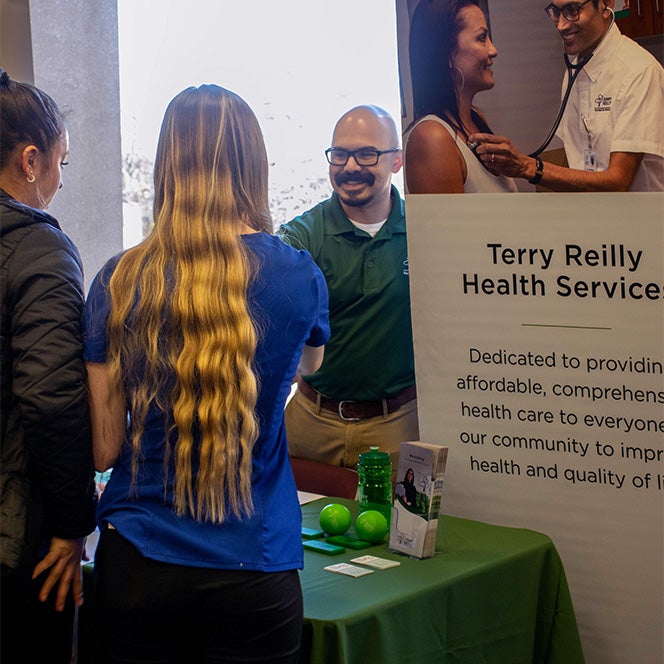It’s not every day you have the chance to impact a community across the entire state. But for a group of nursing students last spring, it’s more often than most.
In the community and population health nursing class, small groups of students partner with local organizations for service-learning projects. They focus on helping vulnerable populations – such as individuals prone to health complications or facing food insecurity – in a sustainable way.
“This course takes students out of the classroom and into the field, giving them time for reflection while challenging preconceived notions of vulnerable populations,” said Jeannine Suter.

Suter is a clinical assistant professor in the School of Nursing and coordinator for the community and population health nursing lab course. “Working as a team towards a common goal allows nursing students to understand other perspectives while making a difference in their community,” she said.
This past spring, a group of senior nursing students collaborated with Terry Reilly and created a community resource flier. It lists organizations both in the local Boise area and rural Idaho that promote holistic well-being and identify education, preventative screenings and mental health resources for the LGBTQ+ community. Terry Reilly posted the students’ work on their website and promoted it statewide on their social media channels.
“Having nursing students collaborate with communities to impact upstream health behaviors – those positive health behaviors that can prevent chronic health issues – exemplifies the importance of community and population health nursing and its impact on the well-being of all individuals,” Suter said.
Jessica Bohart, a clinical education manager at Terry Reilly and the adjunct clinical instructor for the project, emphasized the significance of the students’ work.
“It’s important so that people understand that there are mental health resources available (at their fingertips), they’re not alone and that community health centers, like Terry Reilly, care about our community’s mental wellbeing,” Bohart said.
Before working with the students, Bohart said she connected with Terry Reilly’s stakeholders “to ensure that both the students and Terry Reilly (and Terry Reilly’s patients) would benefit from their project…and they did.”
“I loved being able to help guide and direct them in a way in which they can learn about their own thoughts and perspectives about mental health and community nursing, as well as others’ (stakeholders, patients, etc.) thoughts and perspectives,” she said.